Bottom impeller does not spin in dishwasher
 Dishwasher spray arms are not driven by motors, but are spun by water pressure. The circulation pump creates the necessary pressure, after which the force acts on the impellers, and the nozzles begin to clean the dishes. If, after starting the machine, water does not begin to flow into the chamber, it is likely that the lower impeller in the dishwasher is not rotating. We will describe in detail below what to do in such a situation.
Dishwasher spray arms are not driven by motors, but are spun by water pressure. The circulation pump creates the necessary pressure, after which the force acts on the impellers, and the nozzles begin to clean the dishes. If, after starting the machine, water does not begin to flow into the chamber, it is likely that the lower impeller in the dishwasher is not rotating. We will describe in detail below what to do in such a situation.
Preliminary actions
There are several reasons why the rocker arm does not spin: from serious damage to a simple blockage or problems with water circulation. To accurately determine the source of the problem, you will have to “climb” inside the machine and conduct a pinpoint diagnosis. You can do this yourself, but for the job you will need a modest set of tools:
- screwdrivers, Phillips and slotted (with their help, panels and bolts holding parts are unscrewed);
- pliers (needed to loosen the fixing clamps);
- multimeter (they “call” the dishwasher parts to check their functionality).
Once all the tools have been found, it’s time to start preparing the dishwasher itself. You need to take a number of simple steps.
- Disconnect the equipment from the power supply.
- We disconnect the machine from the remaining communications (remove the drain and fill hoses, turn off the water supply).
Be prepared for the remaining water to flow out after disconnecting the hoses.
- We move the machine to the center of the room, providing ourselves with free access to all sides of the unit.

Now the dishwasher is ready for inspection and diagnostics. You can start troubleshooting.As a rule, two problems most often prevent impellers from rotating fully: clogs or insufficient water circulation. Let's look at each problem in more detail.
Dirt has accumulated
More often than not, the lower spray arm in the dishwasher does not spin due to a simple blockage. Debris blocks the drainage of waste fluid and prevents the pump from accelerating to its full potential. Therefore, you should pay attention to the pump impeller, which suffers from accumulated food debris.
It is necessary to clean the drain carefully and wearing protective gloves, as it is possible that the blockage was formed from fragments of broken dishes.
The algorithm of work is quite simple.
- Make sure that there is no water left in the working chamber. If the liquid is not completely removed, remove it through the drain hose.
- We remove all components, baskets, containers, trays and holders from the tank.
- We unscrew the garbage filter, which is located at the bottom of the machine. If there is dirt on the plastic, wash the nozzle with soap.
- Next, remove the protective mesh. It is recommended to rinse it under the tap.
- Wipe off excess water with a sponge.
- Remove the special cover by pulling it towards you.
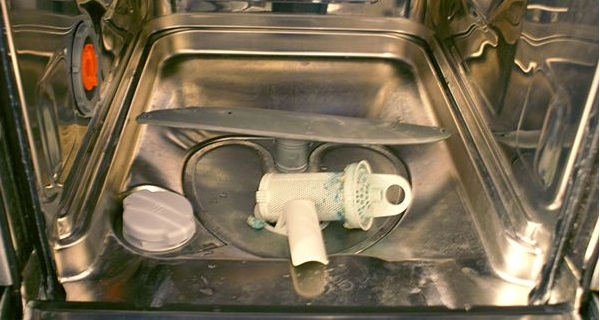
The pump impeller is now accessible and cleaning can begin. Carefully lower your hand into the vacated hole and carefully remove all accumulated debris. We also inspect the injectors located here and, if necessary, clean them. Don’t forget to check the quality of work by turning the impeller with your finger.
Water circulation problems
If cleaning the nozzle and impeller does not help, move on. Most likely, there is a problem with the proper circulation of water, which is why the latter does not enter the working chamber. You will have to check the operation of the pump responsible for pressure and pressure, and the drain pump.First we pay attention to the drainage pump:
- we find the sprayer and remove it;
- take a screwdriver and unscrew all the bolts around the perimeter of the bottom;
- spread unnecessary rags nearby and turn the machine on its side;
- remove the bottom of the machine;
- if the dishwasher has complete protection against leaks, then do not forget to remove the float sensor attached to the tray;
- We pull out the contacts from the wires leading to the electric motor.
This is where the drain pump is located. It is enough to remove it from the fixation and clean the seat from accumulated dirt. Next, we attach the multimeter probes to the pump contacts and “ring” the device to see if it’s working. If the tester shows a faulty part, it must be replaced with a similar one. Assembly is performed in reverse order.
If everything is fine with the pump, then the circulation pump is at fault. In such a situation, after starting, the electric motor hums, the cycle does not start, the impellers do not rotate, and the sprinklers do not spin. Despite the apparent scale, anyone can handle the repair. The main thing is to follow simple instructions.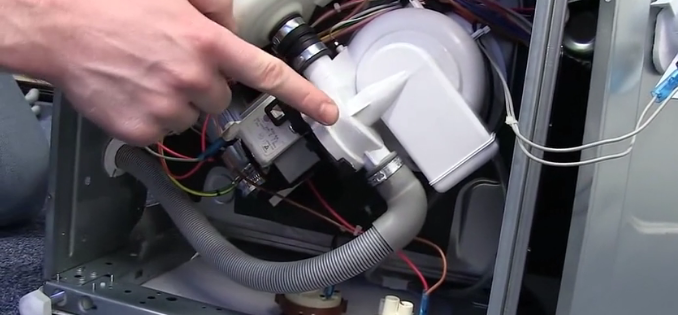
- First, loosen the clamps on the pipes connected to the pump.
- Disconnect all wires connected to the part.
- Unlock the latches.
- Loosen the screw holding the device.
- We release other pipes.
- We remove the engine from the seat and test it using multimeter probes.
- We replace the faulty engine, not forgetting to ensure the accurate fit of all bushings.
It is not difficult to repair sprinklers that do not rotate - service technicians classify such work as moderately difficult. But it’s better not to cause problems with impellers, clean the hoses on time and not overload the dishwasher.
Interesting:
Reader comments
- Share your opinion - leave a comment
Categories
Washing machine repair


For buyers

For users

Dishwasher

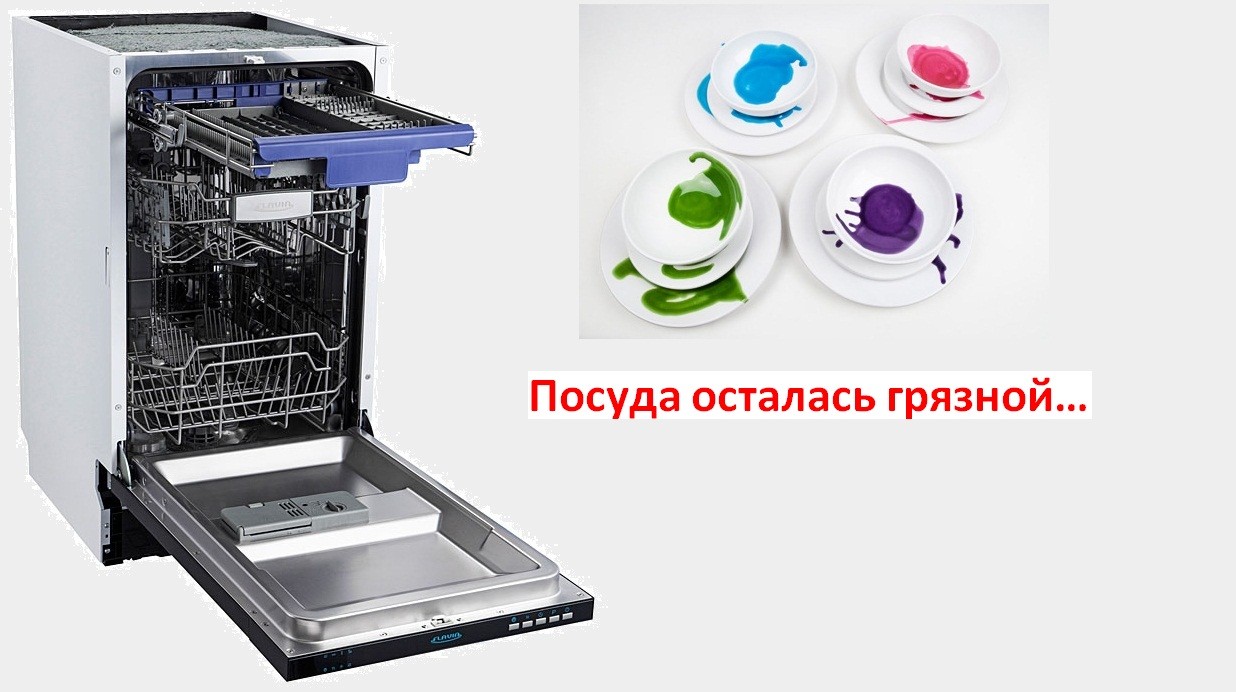
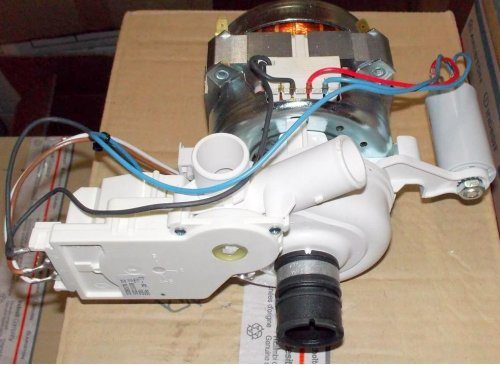
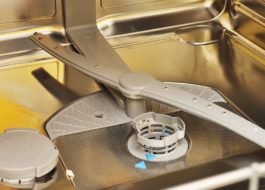
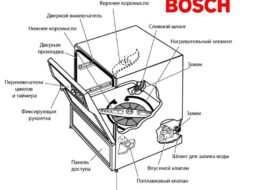

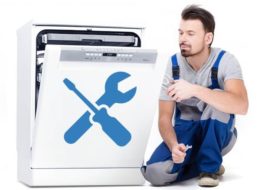










Add a comment